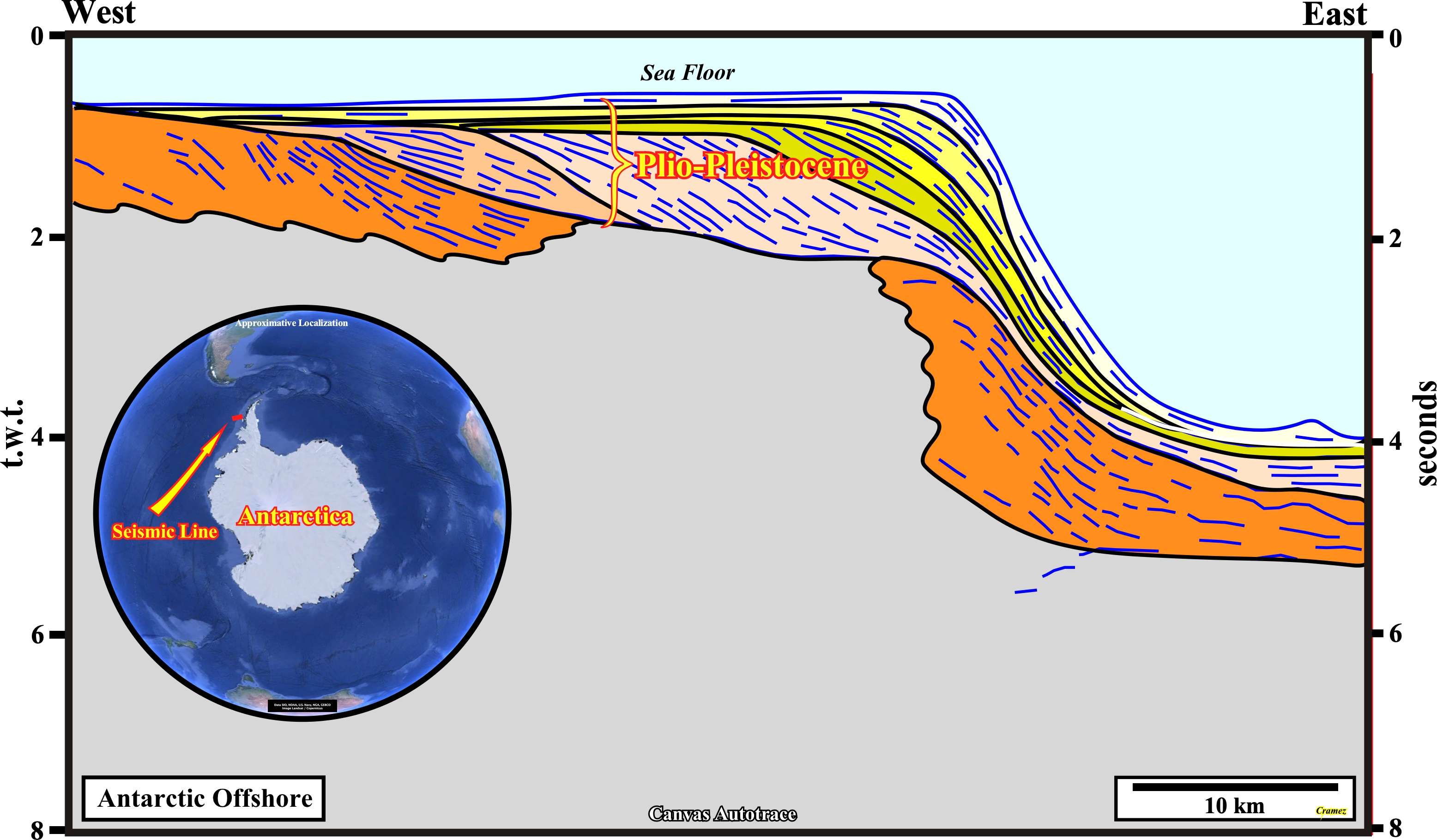

Antarctic Offshore
Antarctic Peninsula


The Plio-Pleistocene strata is overall progradational,i.e., the outbuilding of the shelf break (can coincide with the shoreline in lowstand geological conditions, i.e., no shelf conditions) much more important than the upbuilding. However, the uppermost intervals, that is to say, the uppermost sequence-paracycles (stratigraphic unit deposited during an eustatic paracycle) the marine ingression is quite important since it is associated to the global Quaternary deglaciation (the melting of ice). In fact is quite easy to recognize that the lower seismic packages have an oblique internal configuration (no upbuilding, just outbuilding,) while the upper ones have a sigmoid internal configuration with an amount the outbuilding more or less equal to the outbuilding. The most probable cause of shelfal accommodation (space available for the sediments) is the glacio-eustasy. In fact, during the Pliocene/Pleistocene, the absolute sea level began to fall about 120 meters, creating lowstand geological conditions (sea level lower than the basin edge). Then, it rose, more or less, the same creating highstand geological conditions. However, it must be remembered that much more time is needed to deposit ice on the continent than to melt it. The heat exchange between the ice caps, ice seas and the ocean cools the water surface. The water becoming colder and denser sinks being replaced by warmer water from the bottom. This means that the formation of ice shelves (ice seas that are not to be confused with glacial ice caps) requires cooling of the whole water column, which is not the case during deglaciation which spread in surface a layer of water little salted. The isostatic re-balancing associated with glacio-eustasy should be taken into account to understand sea level changes. It is important not to forget that in areas where the uplift (crustal rebound) was important, the sediments were tilted (by lengthening) in a significant way. In the North Sea (Norway offshore), for instance, the crustal uplift (crustal rebound for certain geoscientists) in response to the melting of the ice, is, currently, around 1,500 meters, which has important implications in the petroleum systems exploration. It implies either a hydrocarbon dis-migration (total or partial destruction of traps that could have been saturated with hydrocarbons) or an hydrocarbon re-migration.
Send E-mails to carlos.cramez@bluewin.ch with comments and suggestions to improve this atlas.
Copyright © 2001 CCramez
Last update:
2022